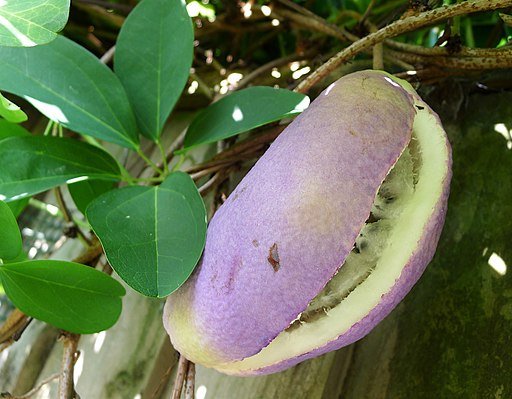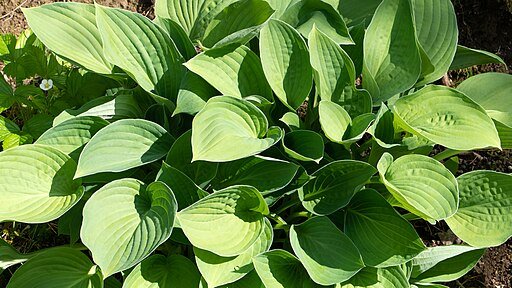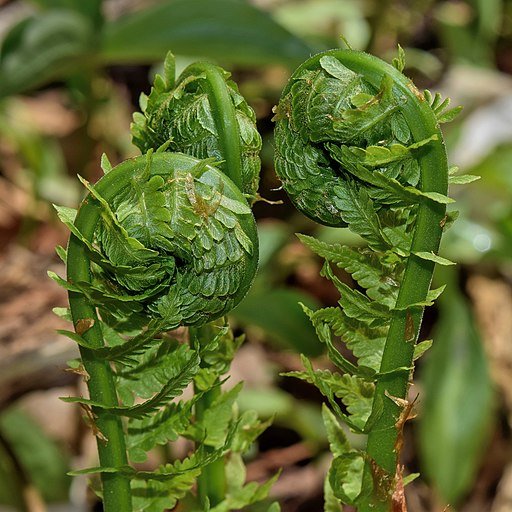
Make it stand out
Furoshiki by ainisomatte x kamado stories
INDIGO
This furoshiki was dyed using natural indigo (ai 藍) using a traditional Japanese method.
It involves a 15-months long tending process, in which the indigo plant is grown from seed, the leaves are then harvested and transformed into dye (sukumo) through the alchemy of fermentation, to finally create an all natural living vat. This blue was handmade by Melanie (ainisomatte) and the microbiome that surrounds her and her indigo fields located in Okayama.
www.ainisomatte.net / @ainisomatte
WILD EDIBLES OF JAPAN
The design of this furoshiki represents the wild edible plants (sansai 山菜)commonly found in Japan beginning in the spring time. Sansai cuisine is woven into the everyday culture of the people here and enjoyed by many.
Sansai recipes capture the change of seasons, right in our kitchens and dinner plates, grounding us to our landscapes. Monica (Kamado Stories) created this design with the desire to share the knowledge of wild food identification; a human skill that is old as time.
@momonga.mo
1. AKEBI / CHOCOLATE VINE (Akebia quinata)
2. AMADOKORO / SOLOMON’S SEAL (Polygonatum odoratum var. pluriflorum)
Image: Katja Schulz from Washington, D. C., USA, CC BY 2.0, via Wikimedia Commons
1. AKEBI / CHOCOLATE VINE (Akebia quinata)
2. AMADOKORO / SOLOMON’S SEAL (Polygonatum odoratum var. pluriflorum)
2. AMADOKORO / SOLOMON’S SEAL (Polygonatum odoratum var. pluriflorum)
Grows in mountains and grasslands. Colloquially goes by the name of ‘‘ama-na’’ in some regions. The young shoots can be eaten and taste like sweet asparagus. It has a long history of medicinal use in eastern asia, such as sealing wounds.
Image: Katja Schulz from Washington, D. C., USA, CC BY 2.0, via Wikimedia Commons
3. FUKINOTO/ GIANT BUTTERBUR
Member of the daisy family, closely related to coltsfoot. The young flower shoot is a springtime favorite amongst Japanese people. The flowers are quite bitter and may need to go through a process before cooking with. Some common ways that they can be enjoyed is as tempura or fuki-miso paste.
Fuki-miso paste recipe
Handful of Japanese butterbur buds
2 tbsp miso
1 tbsp sake & mirin
1/2-1 tsp oil
Roughly chop up the buds and saute with oil.
Reduce heat, add in miso, sake and mirin. Mix on low heat for a few minutes.
Serve on rice and enjoy ~
This dish is a way to enjoy the bitter flavors of spring. However, if it is too bitter for your taste, adjust the miso, sake and mirin, or add a sweetner of your choice. The butterburs can also be pre-soaked (change the water a few times) or blanched before cooking with, to further reduce bitterness.
Claes Lööw, CC BY-SA 3.0, via Wikimedia Commons
4. FUKI LEAF
Krzysztof Ziarnek, Kenraiz, CC BY-SA 4.0, via Wikimedia Commons
5. Itadori / Japanese Knotweed
Thomas Bresson, CC BY 4.0, via Wikimedia Commons
6. Hosta
W.carter, CC0, via Wikimedia Commons
7. Kogomi / Ostrich Fern
The Cosmonaut, CC BY-SA 2.5 CA, via Wikimedia Commons
8. Koshiabura
Qwert1234, CC BY-SA 4.0, via Wikimedia Commons
9. Kureson / Water cress
Patrick Hacker, CC BY 4.0, via Wikimedia Commons
10. Kudzu
1. AKEBI / CHOCOLATE VINE (Akebia quinata)
The outer rind is tough and bitter and will burst open to reveal a sweet pulp inside that is reminiscent of dragon fruit. The pulp is riddled with hard and bitter seeds that need to be spat out. It can be spotted dangling down from other trees during the fall. The vines have traditionally been used to weave baskets.
2. AMADOKORO / SOLOMON’S SEAL (Polygonatum odoratum var. pluriflorum)
Grows in mountains and grasslands. Colloquially goes by the name of ‘‘ama-na’’ in some regions. The young shoots can be eaten and taste like sweet asparagus. It has a long history of medicinal use in eastern asia, such as sealing wounds.
3. FUKINOTO/ GIANT BUTTERBUR
Member of the daisy family, closely related to coltsfoot. The young flower shoot is a springtime favorite amongst Japanese people. The flowers are quite bitter and may need to go through a process before cooking with. Some common ways that they can be enjoyed is as tempura or fuki-miso paste.
Fuki-miso paste recipe
Handful of Japanese butterbur buds
2 tbsp miso
1 tbsp sake & mirin
1/2-1 tsp oil
Roughly chop up the buds and saute with oil.
Reduce heat, add in miso, sake and mirin. Mix on low heat for a few minutes.
Serve on rice and enjoy ~
This dish is a way to enjoy the bitter flavors of spring. However, if it is too bitter for your taste, adjust the miso, sake and mirin, or add a sweetner of your choice. The butterburs can also be pre-soaked (change the water a few times) or blanched before cooking with, to further reduce bitterness.
The leaf
, or as nnamul are enjoyed as tempura. In Korea it is enjoyed as namul.
4. FUKI leaf
5. ITADORI: JAPANESE KNOTWEED (Reynoutria japonica)
6. KIBOUSHI: PLANTAIN LILY HOSTA FORTINEI ( a variety of Hosta Montana). URUI: HOSTA MONTANA
7. KOGOMI: OSTRICH FERN
8. KOSHIABURA (Chengiopanax sciadophylloides)
9. Kureson
10. KUZU
11. MYOGA
12. MUKAGO
13. NOBIRU: LONG-STAMEN CHIVE (Allium Macrostemon)
14. NOKANZOU
15. SARUNASHI: ACTINIA ARGUTA
16. SERI: JAPANESE PARSLEY
17. TAKENOKO: BAMBOO SHOOTS
18. TARA NO ME: ARALIA ELATA
19. TSUKUSHI: HORSETAIL
20. UDO: ARALIA CORDATA
21. WARABI: PTERIDIUM AQUILINUM/BRACKEN
22. WASABI
23. YOMOGI/MUGWORT
24. YUKINOSHITA/BEEFSTEAK GERANIUM
25. ZENMAI: OSMUNDA JAPONICA/ROYAL FERN
1. AKEBI / CHOCOLATE VINE (Akebia quinata)
The outer rind is tough and bitter and will burst open to reveal a sweet pulp inside that is reminiscent of dragon fruit. The pulp is riddled with hard and bitter seeds that need to be spat out. It can be spotted dangling down from other trees during the fall. The vines have traditionally been used to weave baskets.
Recently a friend discovered that after leaving large amounts of pulp to sit in a jar, it hard turned into a sweet syrup with very high sugar content.
Image: gailhampshire from Cradley, Malvern, U.K, CC BY 2.0, via Wikimedia Commons
INDIGO
This furoshiki was dyed using natural indigo (ai 藍) using a traditional Japanese method.
It involves a 15-months long tending process, in which the indigo plant is grown from seed, the leaves are then harvested and transformed into dye (sukumo) through the alchemy of fermentation, to finally create an all natural living vat. This blue was handmade by Melanie (ainisomatte) and the microbiome that surrounds her and her indigo fields located in Okayama.
www.ainisomatte.net / @ainisomatte
WILD EDIBLES OF JAPAN
The design of this furoshiki represents the wild edible plants (sansai 山菜)commonly found in Japan beginning in the spring time. Sansai cuisine is woven into the everyday culture of the people here and enjoyed by many.
Sansai recipes capture the change of seasons, right in our kitchens and dinner plates, grounding us to our landscapes. Monica (Kamado Stories) created this design with the desire to share the knowledge of wild food identification; a human skill that is old as time.
@momonga.mo
1. AKEBI / CHOCOLATE VINE
2. AMADOKORO / SOLOMON’S SEAL
3. FUKINOTO/ GIANT BUTTERBUR
4. FUKI LEAF
5. ITADORI / JAPANESE KNOTWEED
6. KIBOUSHI / HOSTA
7. KOGOMI: OSTRICH FERN
8. KOSHIABURA
9. KURESON / WATERCRESS
10. KUDZU
11. MYOGA
12. MUKAGO
13. NOBIRU / LONG-STAMEN CHIVE
14. NOKANZO
15. SARUNASHI / KIWI BERRIES
16. SERI / JAPANESE PARSLEY
3. FUKINOTO/ GIANT BUTTERBUR
Member of the daisy family, closely related to coltsfoot. The young flower shoot is a springtime favorite amongst Japanese people. The flowers are quite bitter and may need to go through a process before cooking with. Some common ways that they can be enjoyed is as tempura or fuki-miso paste.
Fuki-miso paste recipe
Handful of Japanese butterbur buds
2 tbsp miso
1 tbsp sake & mirin
1/2-1 tsp oil
Roughly chop up the buds and saute with oil.
Reduce heat, add in miso, sake and mirin. Mix on low heat for a few minutes.
Serve on rice and enjoy ~
This dish is a way to enjoy the bitter flavors of spring. However, if it is too bitter for your taste, adjust the miso, sake and mirin, or add a sweetner of your choice. The butterburs can also be pre-soaked (change the water a few times) or blanched before cooking with, to further reduce bitterness.
Claes Lööw, CC BY-SA 3.0, via Wikimedia Commons
4. FUKI LEAF
Krzysztof Ziarnek, Kenraiz, CC BY-SA 4.0, via Wikimedia Commons
5. Itadori / Japanese Knotweed
Thomas Bresson, CC BY 4.0, via Wikimedia Commons
6. Hosta
W.carter, CC0, via Wikimedia Commons
7. Kogomi / Ostrich Fern
The Cosmonaut, CC BY-SA 2.5 CA, via Wikimedia Commons
8. Koshiabura
Qwert1234, CC BY-SA 4.0, via Wikimedia Commons
9. Kureson / Water cress
Patrick Hacker, CC BY 4.0, via Wikimedia Commons
10. Kudzu
1. AKEBI / CHOCOLATE VINE (Akebia quinata)
The outer rind is tough and bitter and will burst open to reveal a sweet pulp inside that is reminiscent of dragon fruit. The pulp is riddled with hard and bitter seeds that need to be spat out. It can be spotted dangling down from other trees during the fall. The vines have traditionally been used to weave baskets.
2. AMADOKORO / SOLOMON’S SEAL (Polygonatum odoratum var. pluriflorum)
Grows in mountains and grasslands. Colloquially goes by the name of ‘‘ama-na’’ in some regions. The young shoots can be eaten and taste like sweet asparagus. It has a long history of medicinal use in eastern asia, such as sealing wounds.
3. FUKINOTO/ GIANT BUTTERBUR
Member of the daisy family, closely related to coltsfoot. The young flower shoot is a springtime favorite amongst Japanese people. The flowers are quite bitter and may need to go through a process before cooking with. Some common ways that they can be enjoyed is as tempura or fuki-miso paste.
Fuki-miso paste recipe
Handful of Japanese butterbur buds
2 tbsp miso
1 tbsp sake & mirin
1/2-1 tsp oil
Roughly chop up the buds and saute with oil.
Reduce heat, add in miso, sake and mirin. Mix on low heat for a few minutes.
Serve on rice and enjoy ~
This dish is a way to enjoy the bitter flavors of spring. However, if it is too bitter for your taste, adjust the miso, sake and mirin, or add a sweetner of your choice. The butterburs can also be pre-soaked (change the water a few times) or blanched before cooking with, to further reduce bitterness.
The leaf
, or as nnamul are enjoyed as tempura. In Korea it is enjoyed as namul.
4. FUKI leaf
5. ITADORI: JAPANESE KNOTWEED (Reynoutria japonica)
6. KIBOUSHI: PLANTAIN LILY HOSTA FORTINEI ( a variety of Hosta Montana). URUI: HOSTA MONTANA
7. KOGOMI: OSTRICH FERN
8. KOSHIABURA (Chengiopanax sciadophylloides)
9. Kureson
10. KUZU
11. MYOGA
12. MUKAGO
13. NOBIRU: LONG-STAMEN CHIVE (Allium Macrostemon)
14. NOKANZOU
15. SARUNASHI: ACTINIA ARGUTA
16. SERI: JAPANESE PARSLEY
17. TAKENOKO: BAMBOO SHOOTS
18. TARA NO ME: ARALIA ELATA
19. TSUKUSHI: HORSETAIL
20. UDO: ARALIA CORDATA
21. WARABI: PTERIDIUM AQUILINUM/BRACKEN
22. WASABI
23. YOMOGI/MUGWORT
24. YUKINOSHITA/BEEFSTEAK GERANIUM
25. ZENMAI: OSMUNDA JAPONICA/ROYAL FERN
1. AKEBI / CHOCOLATE VINE (Akebia quinata)
The outer rind is tough and bitter and will burst open to reveal a sweet pulp inside that is reminiscent of dragon fruit. The pulp is riddled with hard and bitter seeds that need to be spat out. It can be spotted dangling down from other trees during the fall. The vines have traditionally been used to weave baskets.
Recently a friend discovered that after leaving large amounts of pulp to sit in a jar, it hard turned into a sweet syrup with very high sugar content.
Image: gailhampshire from Cradley, Malvern, U.K, CC BY 2.0, via Wikimedia Commons
17. TAKENOKO / BAMBOO SHOOTS
18. TARA NO ME / ARALIA ELATA
19. TSUKUSHI / HORSETAIL SHOOTS
20. UDO / ARALIA CORDATA
21. WARABI / EAGLE FERN
22. WASABI
23. YOMOGI / MUGWORT
24. YUKINOSHITA / BEEFSTEAK GERANIUM
25. ZENMAI / OSTRICH FERN










